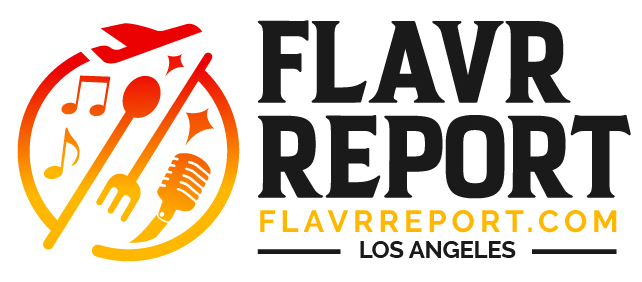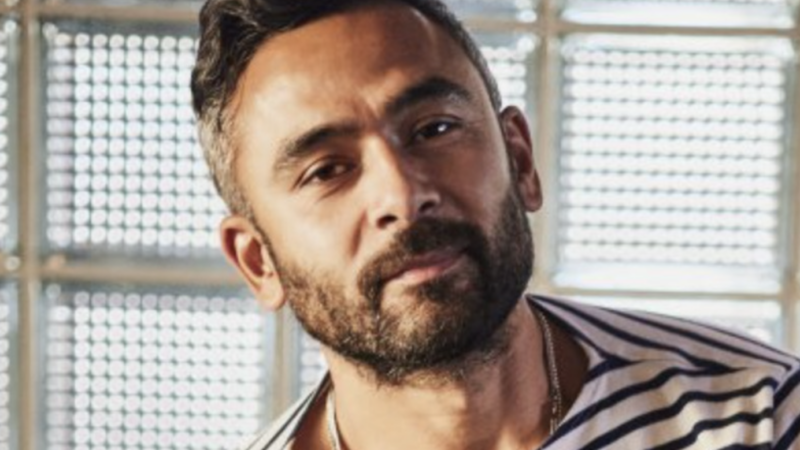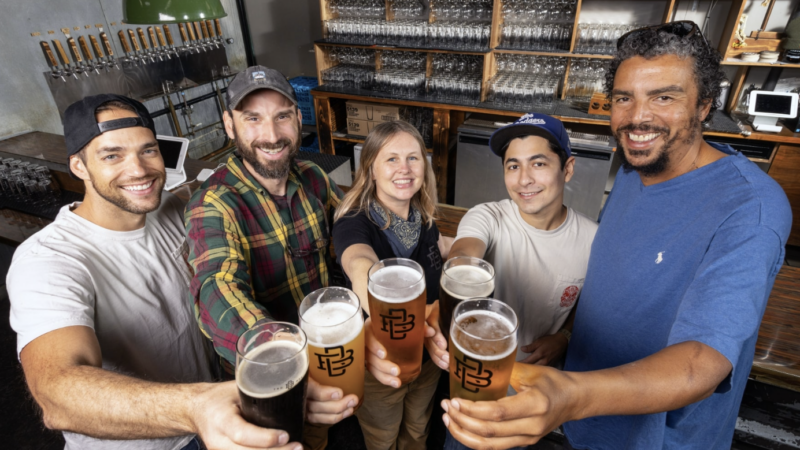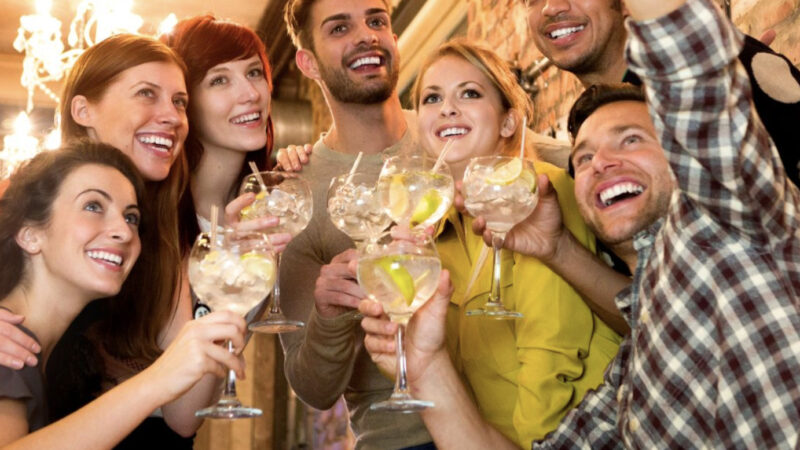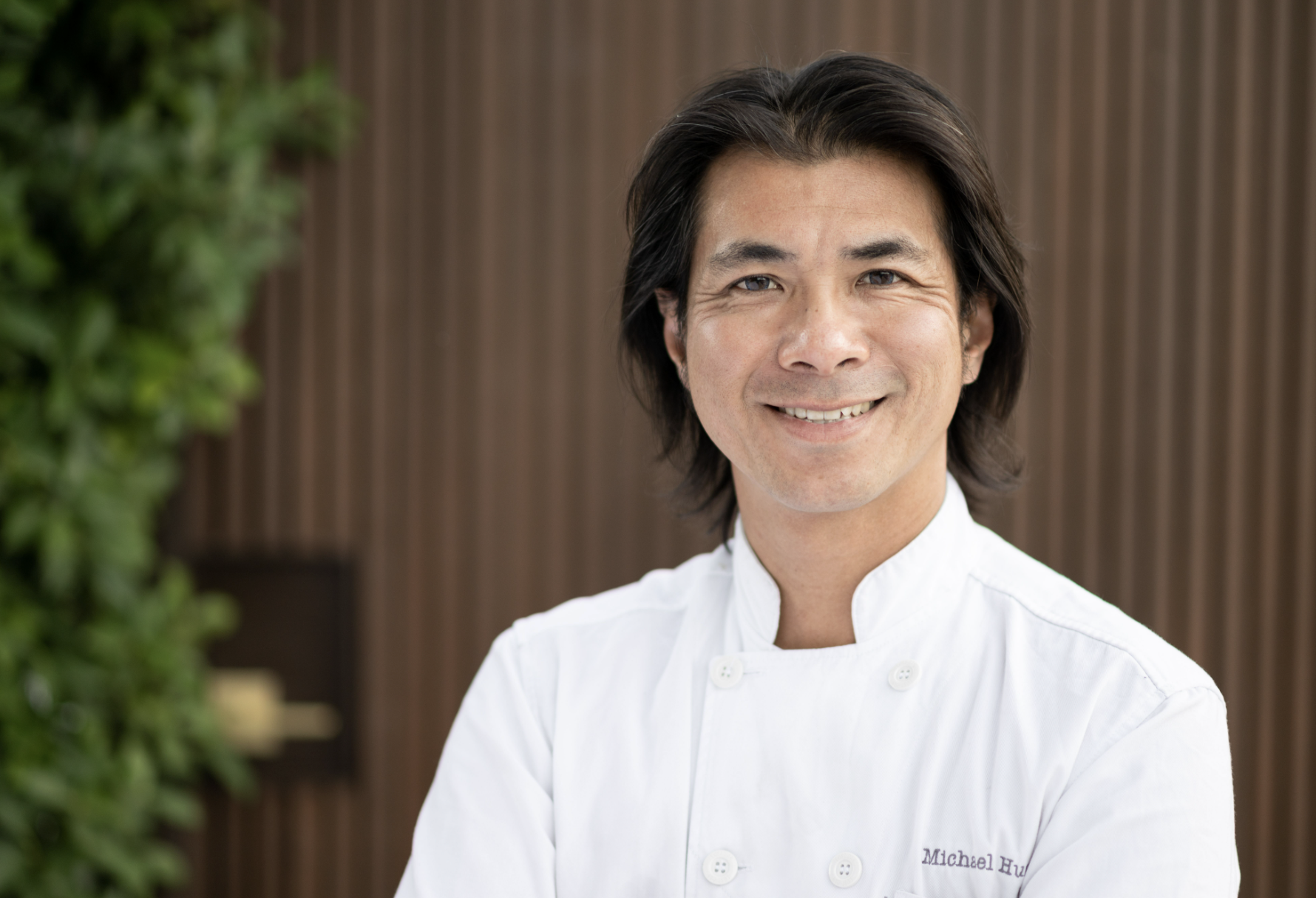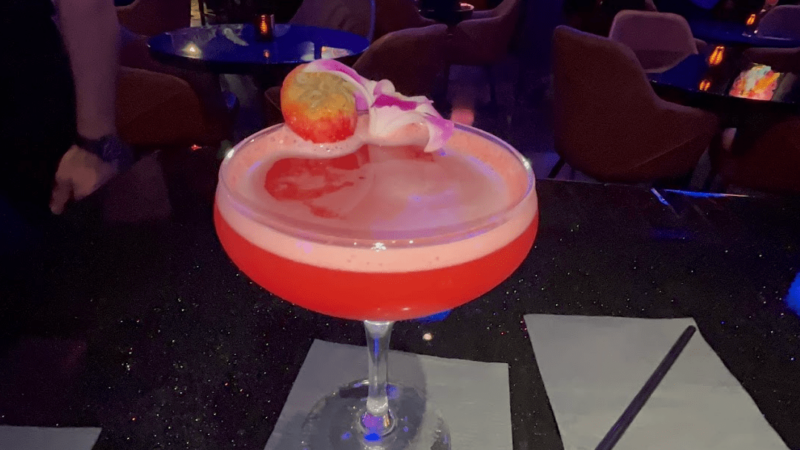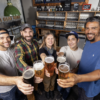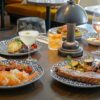Ventura County ‘s Selvin Restaurant and Lounge, the Conejo Valley premiere dining destination Grand Opening June 2024
Selvin’s Restaurant and Lounge opens in June 2024, becoming Conejo Valley’s premiere dining destination for all occasions.

Selvin’s Restaurant and Lounge
Ventura County’s dining destination
Ventura County’s dining destination provides a lush interior oasis serving a signature California coastal cuisine menu and mixologist-crafted cocktails. It is located next to the Palm Garden Hotel, TripAdvisor’s Traveler’s number-one Choice since 2019, fostering a welcoming neighborhood vibe and inviting you to relax, celebrate, and savor the moment with us.
Chef John Vega’s stellar culinary background
At Selvin’s, guests can expect a culinary journey curated by, Chef John Vega. With a stellar culinary background from the Culinary Institute of America (CIA) in Napa, he’s celebrated for his exquisite palate, creative flair, and extensive experience working at the Three-Michelin-starred restaurant in Chicago. Having honed his skills in prestigious kitchens, Chef Vega brings a wealth of experience and a passion for culinary excellence to Selvin’s.
Special Grand Opening Menu
To celebrate the grand opening and to thank guests for joining, Selvin’s is offering a limited-time tasting menu and complimentary signature cocktails to the first 97 guests.
Conejo Valley’s Selvin Restaurant and Lounge
Featuring timeless dishes that exemplify the restaurant’s commitment to freshness, innovation, and American cuisine with a Coastal California twist, the restaurant will showcase the breadth of its culinary ambitions.

Sweet Corn Agnolotti, Selvin’s Restaurant and Lounge
Featuring tantalizing starters, a variety of shared plates, elegant main courses, and divine desserts, from all of the finest locally sourced ingredients. This is the perfect place for quick meetings, family and friends gatherings, and corporate and social private events.
“Our hospitality team isn’t just a group of individuals;
we’re a family united by a love for creating memorable experiences.
With boundless energy and fresh perspectives,
we infuse each dish and every interaction with our passion for hospitality,
ensuring that every visit is not just a meal but a memorable experience.”
Steven Ortmann
Chief Operating Officer
Selvin’s Restaurant and Lounge is the brainchild of a team that’s passionate about bringing an extraordinary dining experience to Ventura County.

Bruzu, Selvin’s Restaurant and Lounge
Inspired by the rich culinary landscape of coastal California and the contemporary American dining ethos, Selvin’s aims to be an establishment where every visit celebrates the vibrant, diverse flavors that define the community.
Conejo Valley Selvin Restaurant and Lounge Owner Harry Selvin
Harry Selvin, Owner and Founder has been a community icon for decades. Traveling the world for years, Harry’s always had an itch for hospitality. Acquiring the Palm Garden Hotel in 2012, warranted Harry the opportunity to transform hospitality in the Greater Conejo Valley.

Vegas Vesper, Selvin’s Restaurant and Lounge
In the years ahead, Steven Ortmann and his team decided to create something special to celebrate the legacy of Mr. Selvin, introducing Selvin’s Restaurant + Lounge.
“Building a restaurant with a passionate management team
is like crafting a symphony;
each member brings their unique instrument,
but it’s the harmony of our passion
that creates the perfect dining experience.”
Harry Selvin, Owner
Their mission is to create a space that feels like home but inspires a sense of adventure, allowing visitors and locals alike to create memorable moments over exceptional hospitality. Welcome to Selvin’s — where good food, great drinks, and even greater company await.
Selvin’s is the premier restaurant and lounge
Selvin’s is the premier restaurant and lounge found next to the renovated Palm Garden Hotel. Modern yet classic, the food is described as California coastal cuisine. Indoor dining, outdoor patio, champagne room, and banquet event space make Selvin’s the perfect place for any celebratory occasion.
Executive Chef John Vega
John’s culinary journey began as a young prodigy at the Culinary Institute of America (CIA) in Napa, where he quickly distinguished himself as one of the institution’s brightest talents. His exceptional skills earned him a coveted position at Alinea, a world-renowned Three-Michelin-starred restaurant in Chicago, making him one of the youngest chefs to grace its kitchen. Fueled by fond memories of bonding with his father in the kitchen, set against the backdrop of classical music, John understands the intimate nature of food—the power it holds to create lasting memories and forge meaningful connections.
Driven by an unwavering commitment to perfection and a relentless desire to explore culinary boundaries, John embarked on a quest to craft unparalleled dining experiences.
For reservations, contact at reservations@selvins.com
YOU MIGHT ALSO LIKE
LA Artist Victor Solomon Partners with Kendall-Jackson to Design NBA Co-Branded Wine Labels
Artist Victor Solomon Start Groundbreaking Partnership with Kendall-Jackson to Design NBA Co-Branded Wine Labels
Kendall-Jackson, renowned for producing America’s #1 selling Chardonnay and the NBA’s first official wine partner, is thrilled to announce a collaboration with celebrated artist and designer Victor Solomon, hailed for designing the NBA’s Larry O’Brien Championship Trophy.
Victor Solomon: Where Art Meets the NBA Hardwood
Victor Solomon is a Los Angeles-based contemporary artist who has carved out a unique niche at the intersection of art, design, and basketball culture. Known for his stunning, handcrafted works that reimagine iconic basketball symbols through the lens of luxury and fine art, Solomon has become a standout figure in the art world, particularly for his collaborations with the NBA. His work often explores the idea of basketball not just as a sport, but as a global cultural phenomenon, rich with symbolism, community, and artistry.
Solomon’s most notable project, “Literally Balling,” transforms traditional basketball hoops into breathtaking sculptures using materials like stained glass, crystal, and 24K gold. These pieces elevate the everyday aesthetic of the game into something sacred, almost cathedral-like, highlighting the deep reverence many fans hold for basketball. Beyond gallery installations, Solomon has worked directly with the NBA, designing custom trophies, court art, and luxury installations that blend the sport’s raw energy with high-end craftsmanship.
His artistry extends beyond aesthetics—Solomon’s work often reflects the evolution of basketball as a symbol of aspiration, community, and resilience. Whether through a stained glass backboard or a reimagined championship trophy, he bridges the gap between the streets and the art world, honoring the game’s history while pushing creative boundaries. In a league where storytelling is key, Victor Solomon’s art tells the NBA’s story through a lens of beauty, craftsmanship, and cultural significance.
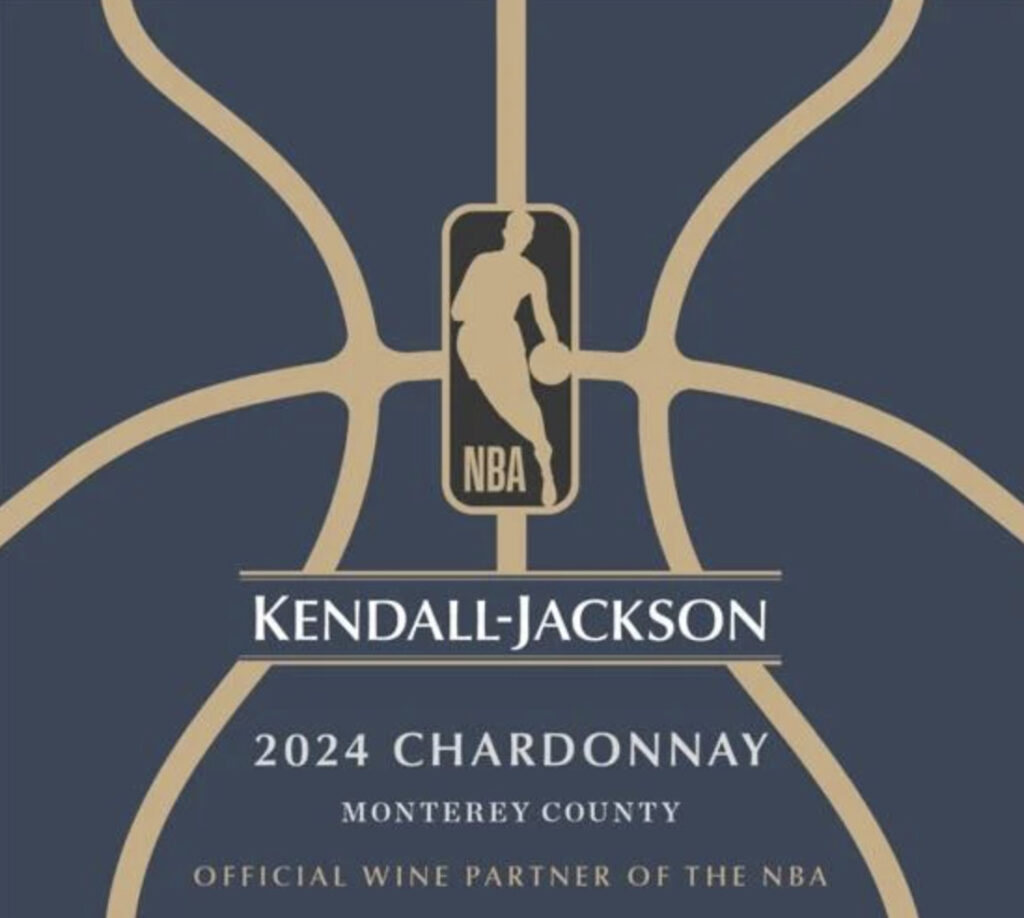
Artist Victor Solomon Start Groundbreaking Partnership with Kendall-Jackson
This collaboration, rooted in mutual connections with the NBA, will feature Solomon’s artistic vision in designing the labels for the league’s first co-branded wines with Kendall-Jackson in Sonoma County, California.
The partnership will officially kick off during NBA All-Star Weekend in San Francisco, where Kendall-Jackson and Solomon will unveil the wine label designs at NBA Crossover, a multi-day fan fest event that celebrates basketball culture, part of All-Star Weekend, taking place in San Francisco February 14 – 16, 2025. Kendall-Jackson will launch a co-branded Sonoma County Cabernet Sauvignon, a Monterey County Chardonnay and a Lake County Sauvignon Blanc in August 2025.
“When we partnered with the NBA, we set out to uniquely blend the culture of wine with the excitement of the game,”
Chris Jackson
Co-Proprietor of Kendall-Jackson
“We are excited to partner with Victor Solomon and bring his extraordinary talents in connecting art with sports culture to the look of our first NBA co-branded wines. This partnership is a natural fit as we expand our relationship with the league and continue to explore unique ways to engage our audiences.”
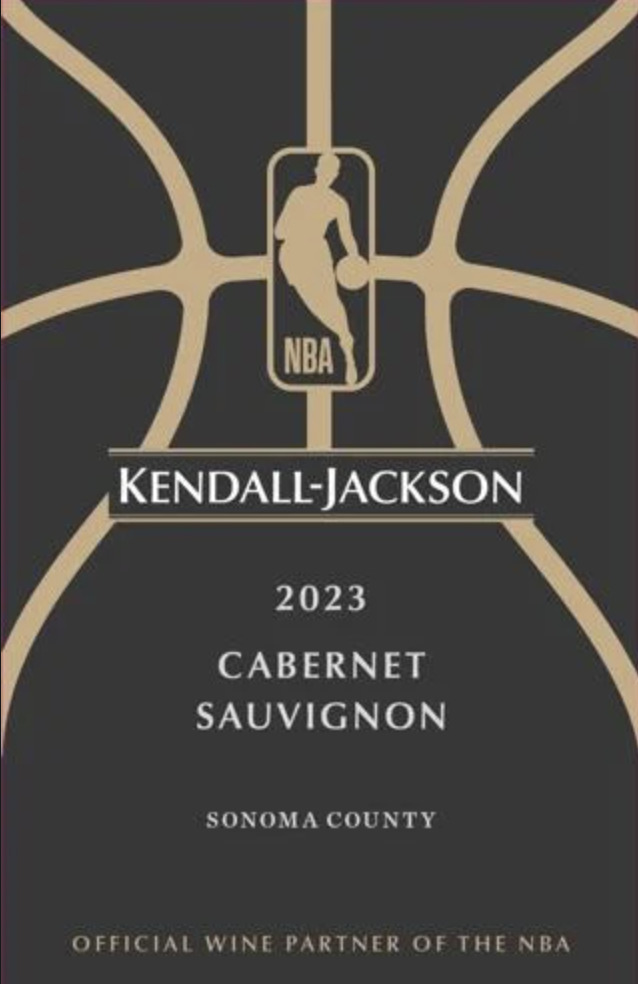
The partnership brings together Kendall-Jackson’s legacy of craftsmanship and Solomon’s signature design aesthetic, which blends traditional artistry with modern inspirations. Victor Solomon’s prior work—including his acclaimed “Literally Balling” series that reimagines basketball through the lens of stained glass and fine craftsmanship—has earned him a reputation for pushing the boundaries of design in sports and culture.
“My work has always been about elevating the artistry within sport,”
Victor Solomon
“Partnering with Kendall-Jackson allows me to extend that vision by creating and celebrating a shared spirit of craftsmanship. My work has included collaborations with the NBA on bespoke trophies and immersive installations that celebrate the league’s iconic legacy. Through the tactile beauty of a wine label, this collaboration offers an opportunity to unite these worlds in a meaningful way.”
Solomon’s meticulous design process involves months of research and hands-on experimentation to craft pieces that are both visually stunning and deeply resonant. Recent projects include a Swarovski crystal basketball installation for the NBA’s 75th Anniversary celebration and his “Journey” sculpture series, which explores the evolution of the game through iconic materials. Upcoming works include collaborations with international museums and luxury brands, and a court refurbishing project throughout California, further cementing his role as a leader at the intersection of art and sports.
For more information about this partnership, visit www.kj.com/NBA. Follow Kendall-Jackson on all social platforms with handle @KJWines.
Join Us: DTLA’s Boomtown Brewery Celebrates 10th Anniversary Feb 21 – 23 with 3 days of Craft Beer, Food, Fun
Join Us: DTLA’s Boomtown Brewery Celebrates 10th Anniversary Feb 21 – 23 with 3 days of Craft Beer, Food, Fun
Boomtown Brewery, L.A.’s iconic craft beer haven nestled in the heart of the DTLA Arts District, is pulling out all the stops to celebrate 10 Years of brewing excellence with an unforgettable Boomtown Brewery 10th Anniversary Weekend!
Boomtown Brewery 10th Anniversary Weekend Feb 21 – 23
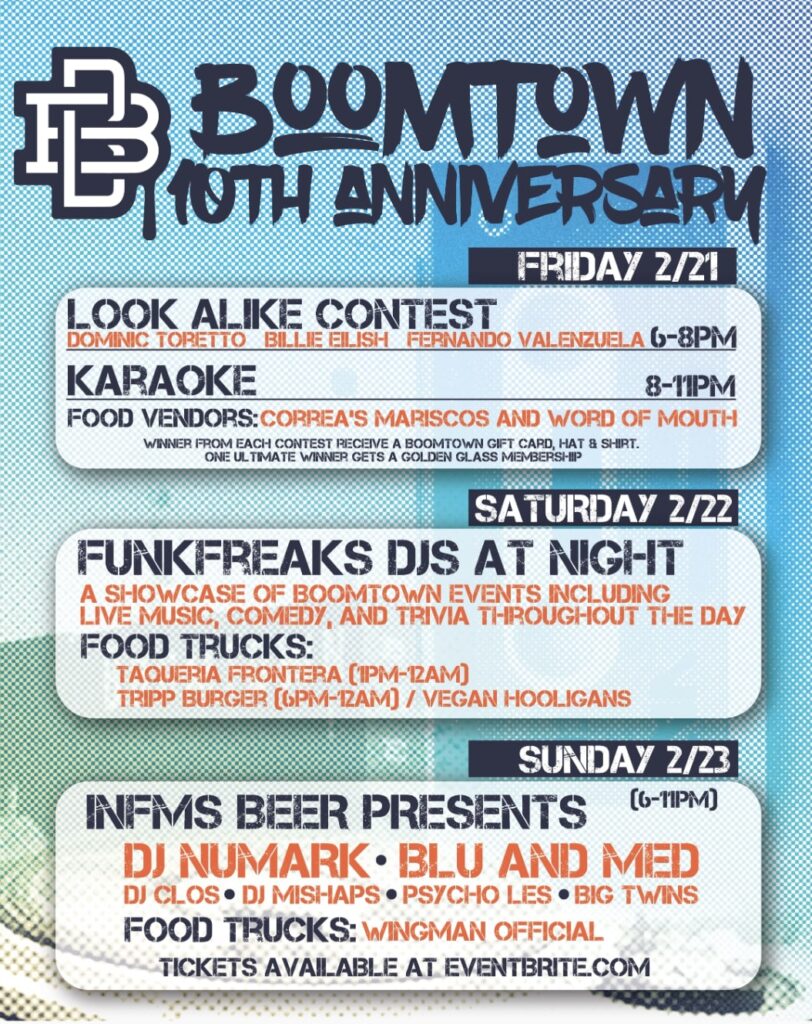
From Friday, February 21st through Sunday, February 23rd, 2025, beer lovers, locals, and visitors alike are invited to raise a glass (or several) in honor of a decade of incredible brews, community vibes, and epic events!
Patrons will enjoy three action-packed days of Craft Beer, Live Entertainment, LA’s Top Food Vendors, and good times.
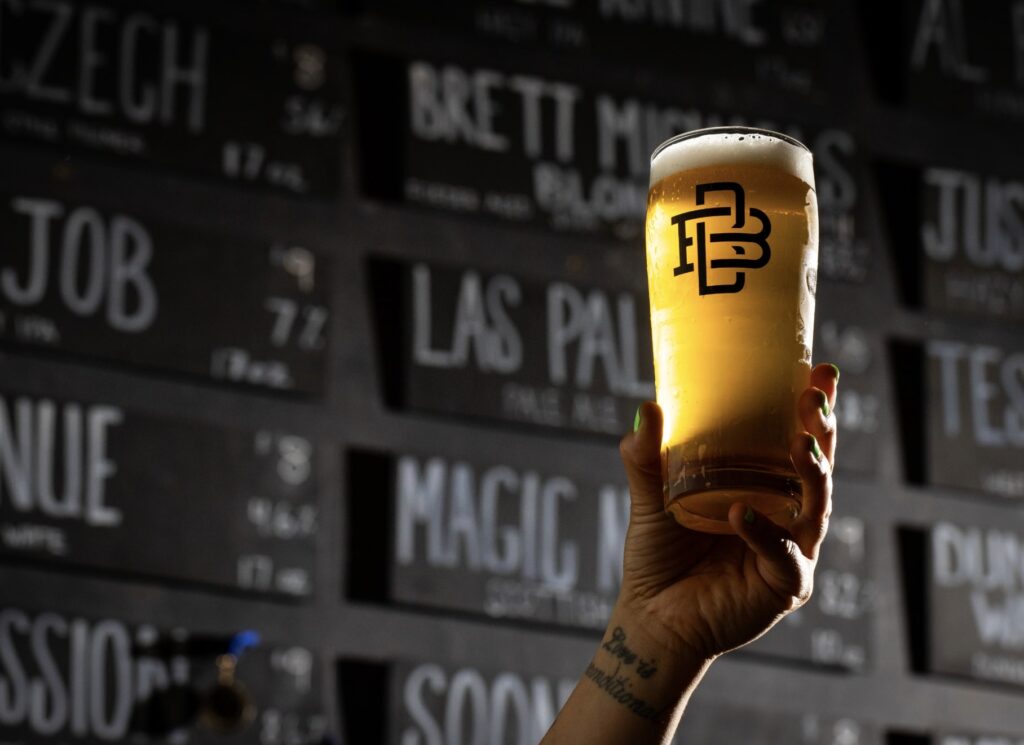
Photo Credit: Nick Gingold / Craft Media LA
The Boomtown Tap Room—just steps from their cutting-edge brewery—will be buzzing with over eighteen Craft Beer selections, including fan favorites like BAD HOMBRE Mexican-Style Lager, Nose Job IPA, Chavez Ravine Hazy IPA, Mic Czech Pilsner, plus a rotating selection of styles including IPAs, Stouts, Sours, Gluten-free Seltzers, and more.
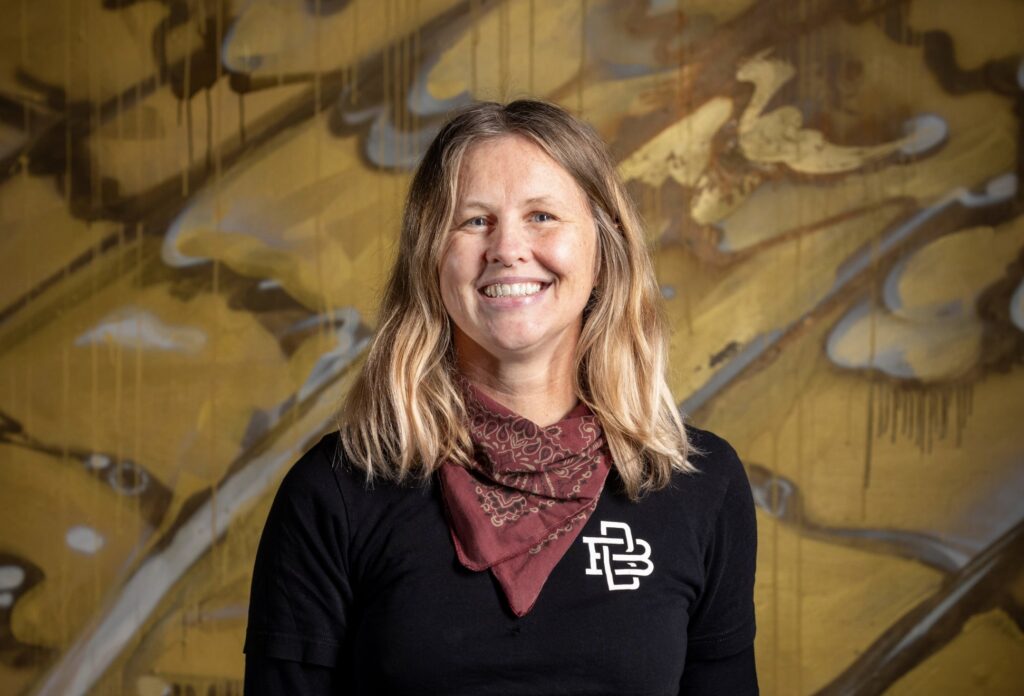
DTLA’s Boomtown Brewery’s Head Brewer Amber Sawicki // Photo Credit: Nick Gingold / Craft Media LA
With Head Brewer Amber Sawicki and Production Manager Benjamin Turkel leading the charge, guests can expect some exciting new releases to mark the occasion.
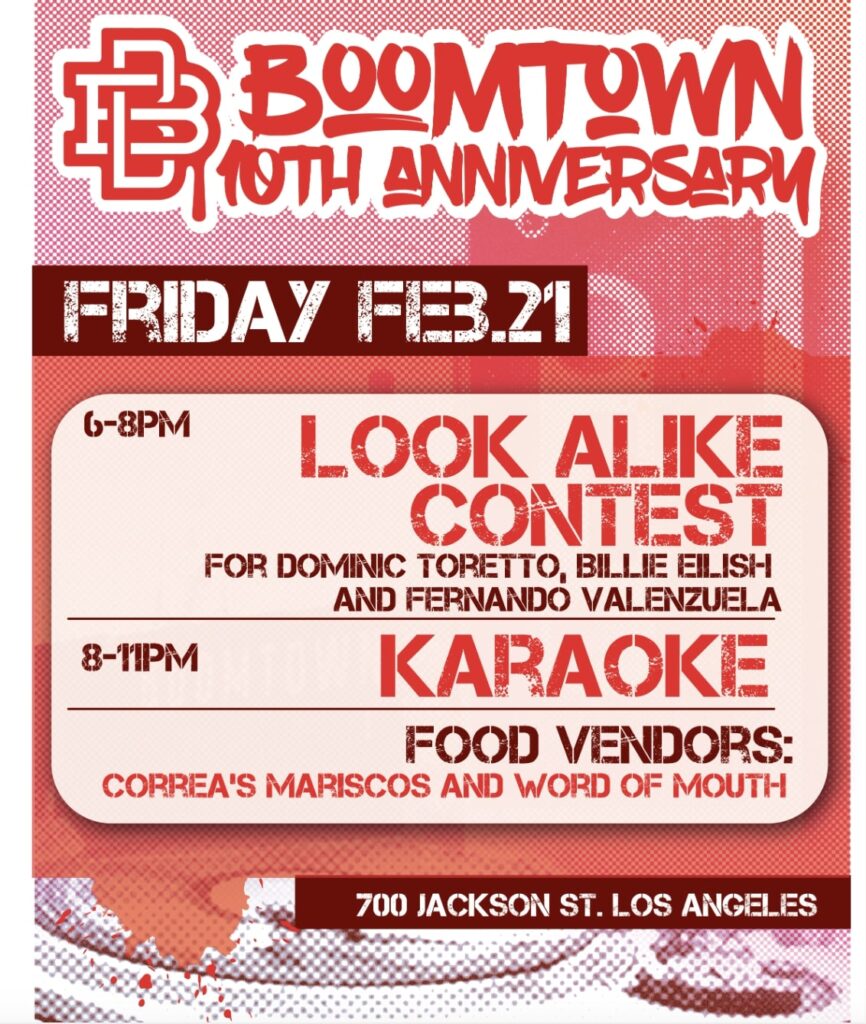
Friday, February 21st, 2025: Look-Alike Contest & Karaoke Kickoff (6:00 PM – 11:00 PM)
Come Dress as an LA Icon from 6:00 pm to 8:00 pm and compete in Boomtown’s Look-Alike Contest!
Maybe we will see Fast & Furious-hero Dominic Toretto, pop sensation Billie Eilish, or Dodgers’ legend Fernando Valenzuela coming to the party and winners will receive a Boomtown Hat, Shirt, and Gift Card, with One Ultimate Winner crowned to receive a Boomtown Golden Glass Membership!
Food Vendors Correas Mariscos and Word of Mouth Truck will be onsite to fuel everyone up for Karaoke Night which will start at 8:00 pm to 11:00 pm, so step up to the mic and get $2 off your next beer just for belting out your favorite tune!
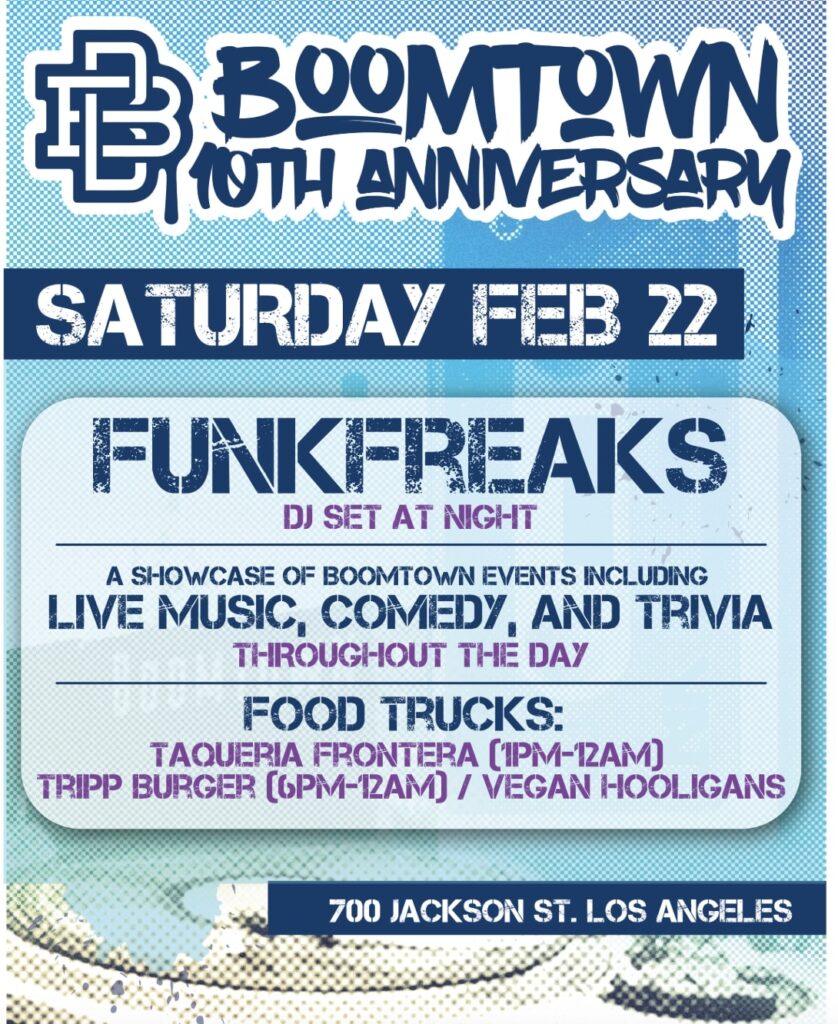
Saturday, February 22nd, 2025: The Official 10th Anniversary Party (12:00 PM – 1:00 AM)
It’s Boomtown Brewery’s 10th Birthday, and guests are invited to partake in everything Boomtown has to offer!
Sip on a full lineup of new and innovative Craft Beers while enjoying a showcase of Live Bands, Stand-Up Comedy, and Trivia from the afternoon until late at night.
Food Vendors Taqueria Frontera and Vegan Hooligans will be serving all day and night, and Tripp Burger will be serving from 6:00 pm to 12:00 Midnight. At 9:00 pm, The Funk Freaks will perform, getting everyone on their feet to dance the night away.
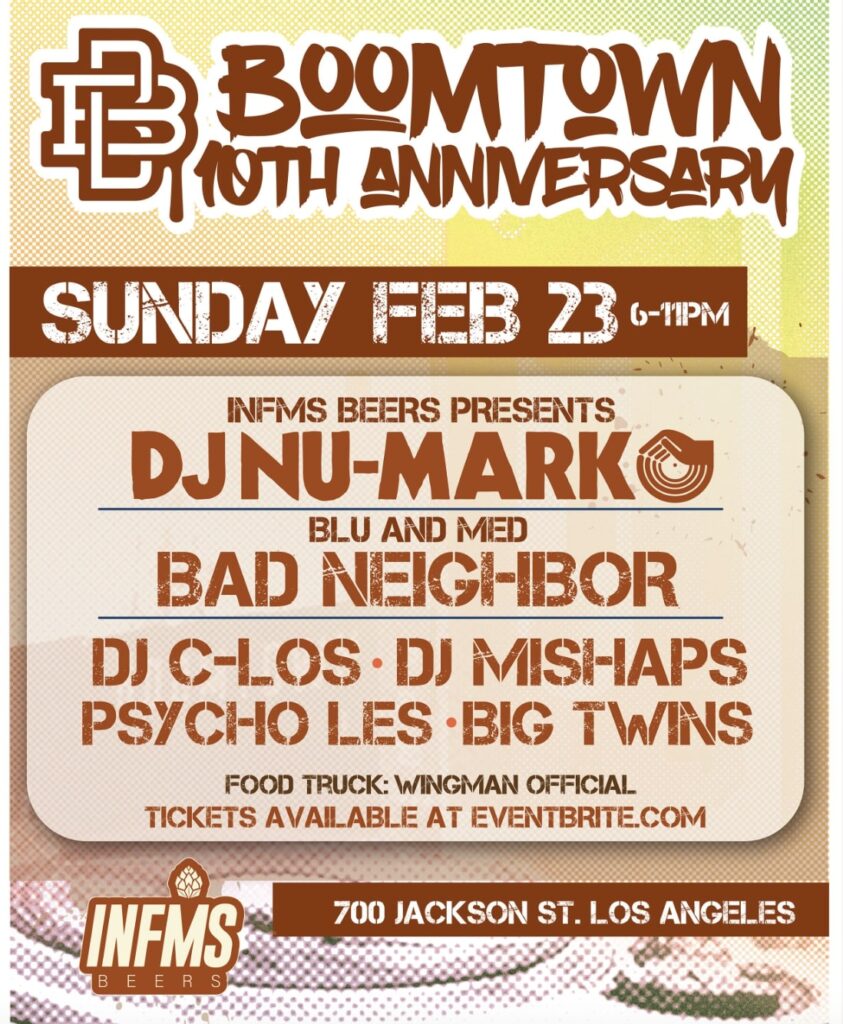
Sunday, February 23rd, 2025: Boomtown Brewery 10th Anniversary: INFMS Beer Hip Hop Concert & Hazy Panda IPA Beer Release (6:00 PM – 11:00 PM)
Boomtown Brewery and INFMS Beer team up once again to bring the best Hip Hop show in town, featuring the return of the Hazy Panda IPA!
Boomtown will be open to the public from 12:00 Noon to 5:00 pm. Boomtown will close briefly before reopening at 6:00 PM for ticketed guests attending Boomtown Brewery’s 10 Anniversary – INFMS Beer
Hip Hop Concert & Exclusive Beer Release featuring DJ Nu-Mark (Member of Jurassic 5), Bad Neighbor (Blu & MED), DJ C-Los, DJ Mishaps, Psycho Les & Big Twins, and Food Vendor The Wingman Official, and more.
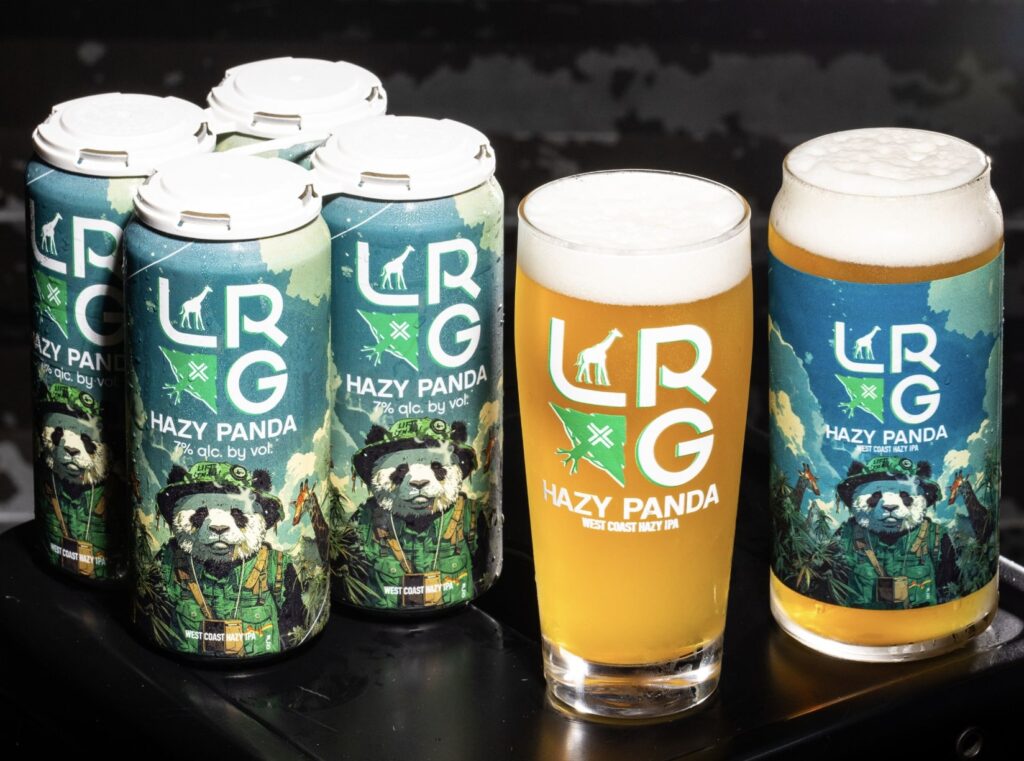
Photo Credit: Nick Gingold / Craft Media LA
This is a 21+ Event and Tickets are required.
There is limited availability, so Get Yours Now here at Boomtown Brewery’s 10th Anniversary: INFMS Beer Hip Hop Concert & Beer Release.
BOOMTOWN BREWERY: A DECADE OF COMMUNITY, CREATIVITY & CRAFT BEER:
Since its inception, Boomtown Brewery has proudly represented Los Angeles, creating unfiltered, full-flavored craft beers with integrity. As a fixture in the DTLA Arts District, Boomtown is more than just a brewery—it’s a community hub for artists, makers, and beer lovers to connect and celebrate the creative spirit of the city.
From live music and trivia nights to open mic events and food festivals, Boomtown Brewery continues to bring people together in meaningful, memorable ways.
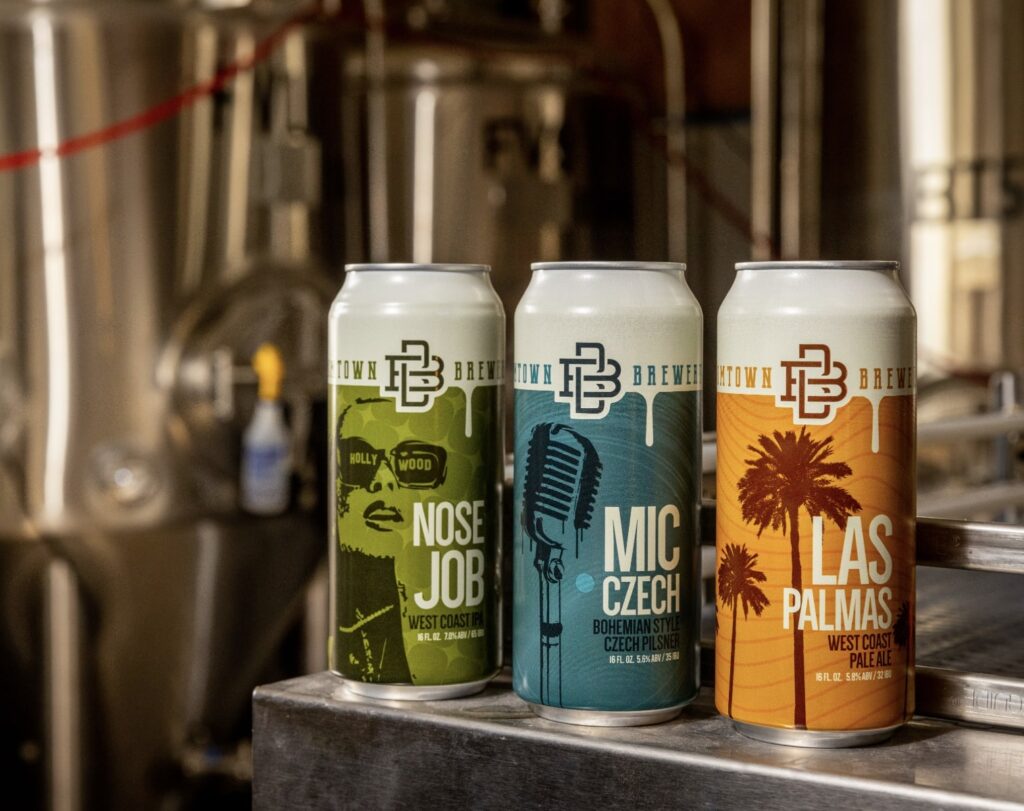
Photo Credit: Nick Gingold / Craft Media LA
As they celebrate this milestone, the team behind Boomtown Brewery—Owners John Rankin, Alex Kagianaris, and Samuel “Chewy” Chawinga—invite you to be part of the magic.
So, mark your calendars, spread the word, and come toast to 10 years of Boomtown Brewery!
Boomtown Brewery’s 10th Anniversary Celebration will take place Friday, February 21st, 2025, through Sunday, February 23rd, 2025, with Saturday, February 22nd, 2025, being their official 10th Anniversary Celebration, from 12:00 noon to 1:00 am. Saturday, February 22nd is a 21+ Event after 8:00 pm and this event is Free to attend, and no tickets are needed.
For more information and to purchase Tickets to Boomtown Brewery’s 10th Anniversary: INFMS Beer Hip Hop Concert & Beer Release on Sunday, February 23rd, 2025, please visit Boomtown Brewery’s 10th Anniversary: INFMS Beer Hip Hop Concert & Beer Release!
Cheers to 10 years of Boomtown Brewery—here’s to many more!
Social Media: Follow Boomtown Brewery on Instagram @boomtowmbrewery, Facebook @Boomtown.Brewery, andTikTok @Boomtown.Brewery
Boomtown Brewery
700 Jackson Street
Los Angeles, CA 90012
T: 213.617.8497
Los Angeles Superbowl Parties: Best Places to Watch the Super Bowl LIX in Los Angeles: Top Bars, Rooftops, and Watch Parties
Celebrate the Superbowl with parties in Los Angeles at the Best Places to Watch the Super Bowl LIX in Los Angeles: Top Bars, Rooftops, and Watch Parties
Super Bowl LIX is shaping up to be an epic showdown, and there are plenty of reasons to be excited—especially for football fans in Los Angeles.

The game will be played at Caesars Superdome in New Orleans in 2025, bringing the championship back to one of the most electric football cities in the country. With potential powerhouse teams in contention, star quarterbacks in their prime, and evolving offensive schemes redefining the game, the stakes couldn’t be higher.

Plus, the Super Bowl’s return to New Orleans means an unmatched atmosphere, with a city known for its legendary food, music, and nightlife turning the event into a week-long festival. Whether you’re watching for the game, halftime show, or just the excuse to throw an epic party, Super Bowl LIX is set to deliver in every way.
Now if you’re not interested in all the sports socializing, and would rather stay home, don’t worry — Super Bowl LIX is airing live on FOX, and Kendrick’s performance will be available on Tubi, NFL+, the NFL mobile app, and SiriusXM. The halftime performance will showcase Kendrick’s iconic raps, and SZA will be joining him as well.
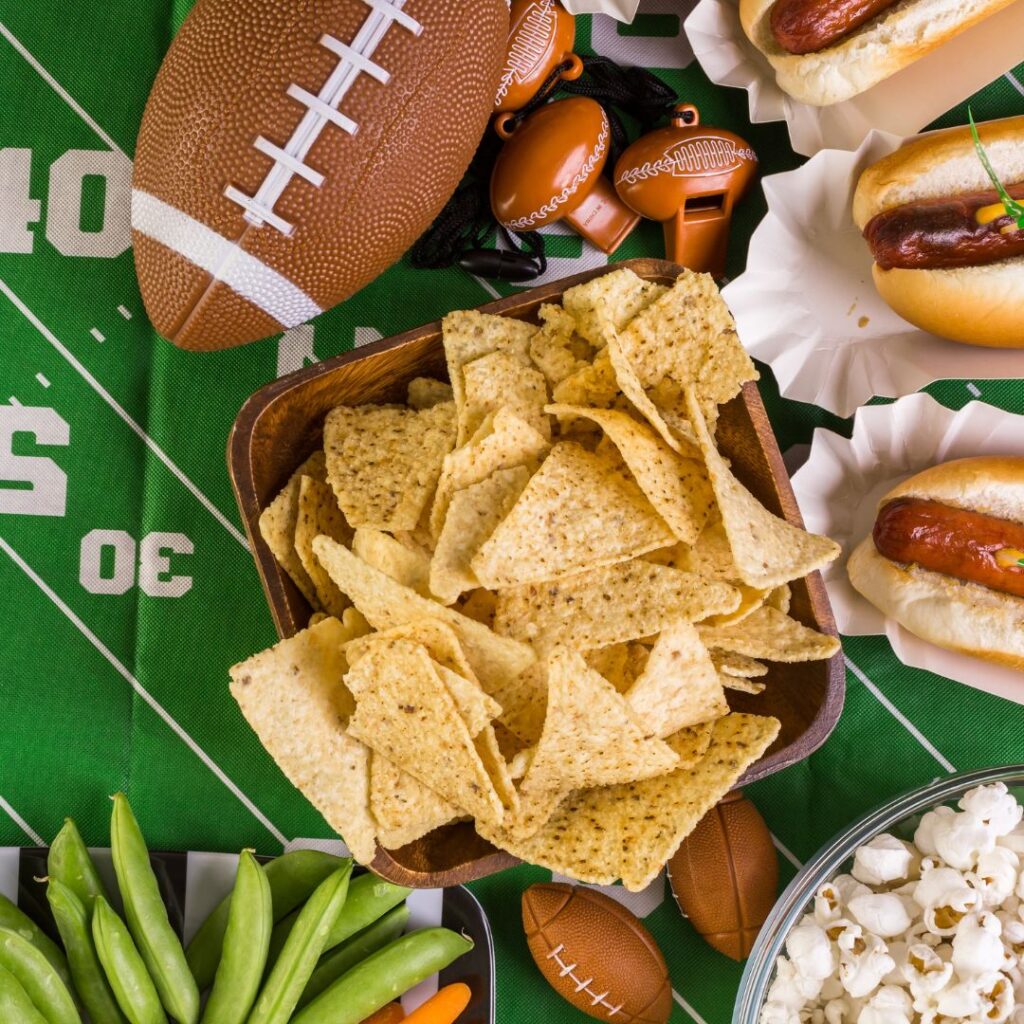
The Ultimate Super Bowl LIX Food and Drink Pairings
The Super Bowl is as much about the food and drinks as it is about the game, with fans across the country indulging in classic comfort foods paired with the perfect beverages.
Buffalo wings and ice-cold beer are the undisputed MVPs of game-day dining—whether it’s a crisp lager, a hoppy IPA, or a smooth wheat beer, the carbonation and bitterness help cut through the heat of the spicy wings.
Nachos piled high with cheese, jalapeños, and seasoned meat call for a refreshing margarita or a Mexican lager, both of which enhance the bold flavors while keeping the palate refreshed.
For barbecue lovers, smoky pulled pork sandwiches or ribs are best paired with a bourbon-based cocktail like an Old Fashioned or a rich, malty brown ale to complement the deep, caramelized flavors.
For those who prefer snacks that are easy to grab between plays, loaded potato skins or classic onion dip with chips pair well with a smooth pilsner or a light-bodied white wine like Sauvignon Blanc to balance the richness. If pizza is on the menu—another Super Bowl staple—a medium-bodied red wine like Zinfandel or a classic pale ale enhances the tangy tomato sauce and gooey cheese.
On the sweeter side, chocolate chip cookies or brownies go great with a dark stout or a creamy espresso martini, making for a winning dessert combo. No matter who you’re rooting for, the right food and drink pairings make the Super Bowl an even more enjoyable experience, ensuring that every bite and sip is as satisfying as a game-winning touchdown.
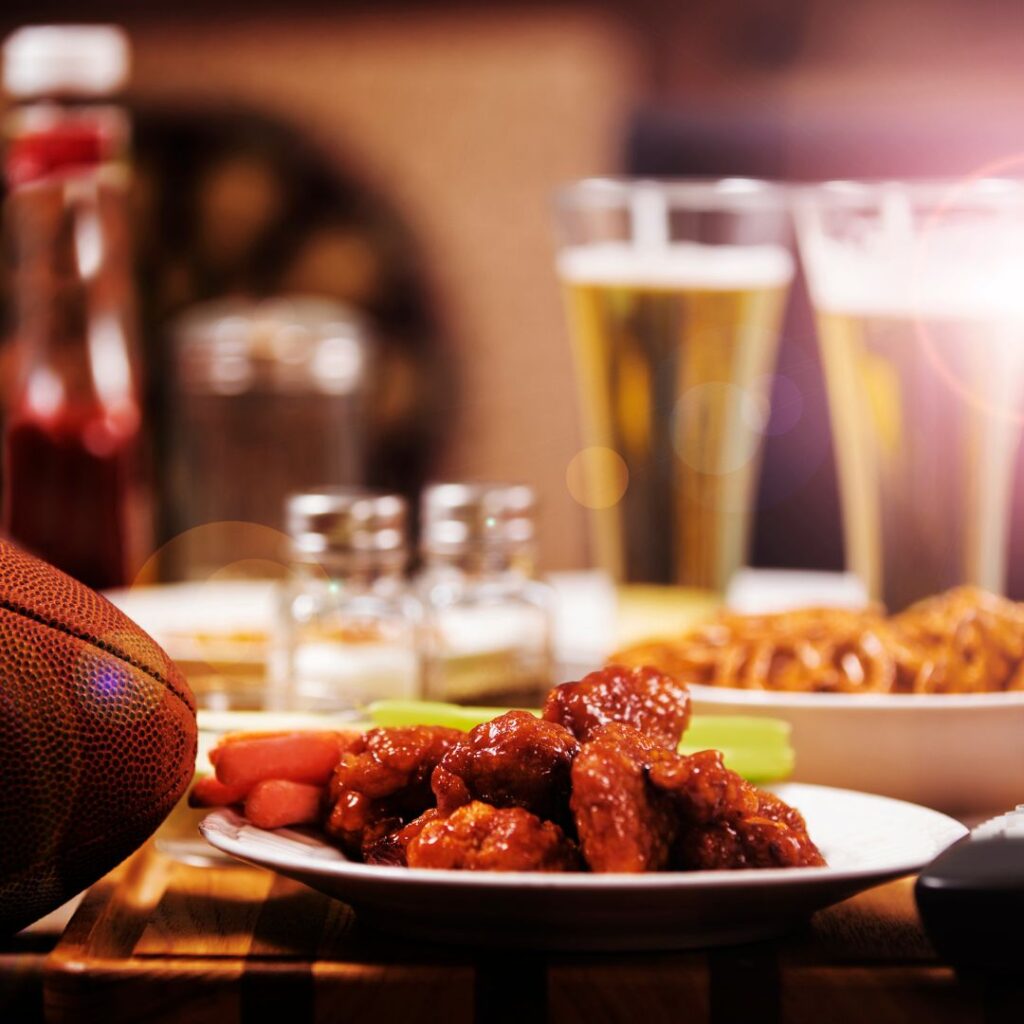
Superbowl with parties in Los Angeles
Now, on to the L.A. Super Bowl watch parties…
Grandmaster Recorders to Watch Super Bowl LIX
Grandmaster Recorders is the place to be for the Super Bowl, offering two incredible spaces to catch the big game. Their rooftop bash is legendary, letting you soak in all the action with the Hollywood Sign as your backdrop, making for a one-of-a-kind viewing experience.
But the excitement doesn’t stop there! Downstairs at Studio 71, you’ll find a cozy, dark ambiance with a state-of-the-art sound system and massive screen, perfect for an immersive game-day vibe. Whether you’re looking for high-energy rooftop views or an intimate, cinematic football experience, Grandmaster Recorders delivers an unforgettable way to watch the Super Bowl.
Learn more: Grandmaster Recorders
Location: 1518 N Cahuenga Blvd, Los Angeles, CA 90028
Paragon Bar and Grill
Paragon Bar and Grill, a favorite in the 818, is the go-to spot for an epic Super Bowl watch party every year. With delicious food, a huge selection of beers on tap, and bucket specials, it’s the perfect place to kick back and enjoy the game with fellow fans.
But the fun doesn’t stop at food and drinks—giveaways and special promotions make the atmosphere even more exciting, so it feels like everyone walks away a winner. Whether you’re there for the football, the food, or just the electric energy, Paragon Bar and Grill knows how to throw a Super Bowl party done right.
Learn more: Paragon Bar and Grill
Location: 8319 Louise Ave, Northridge, CA 91325
Barney’s Beanery to watch Super Bowl LIX
All Barney’s Beanery locations across Los Angeles are turning into the ultimate Super Bowl hotspots, with the game playing on 40+ TVs and multiple projectors with full sound. No matter where you sit, you’ll have a prime view of all the action.
With their lively atmosphere, great food, and plenty of drinks to go around, Barney’s is the perfect place to post up with friends and watch every play, touchdown, and commercial. Whether you’re there for the game or just the good vibes, you won’t miss a moment of the action!
Locations:
- Santa Monica: 1351 3rd Street Promenade, Santa Monica, CA
- West Hollywood: 8447 Santa Monica Blvd, West Hollywood, CA
- Pasadena: 99 E Colorado Blvd, Pasadena, CA 91105
- Burbank: 250 N 1st St, Burbank, CA 91502
3rd Base
3rd Base is bringing sports fans the ultimate Super Bowl bash, combining upscale dining, craft cocktails, and their famous two-tier tequila trees for a next-level game-day experience. Whether you’re there for the big plays or just the top-notch food and drinks, this spot knows how to do game day right.
This year, they’re offering general admission, seat reservations, and table reservations, so you can lock in your spot for the action. Just keep in mind—food and beverage minimums apply, but with their killer menu and drink selection, meeting the minimum won’t be a problem!
Learn more: 3rd Base
Location: 1562 N Cahuenga Blvd, Los Angeles, CA
Best Places to Watch Super Bowl LIX in Los Angeles
You Might also like
-
LA Father’s Day: Le Portteus Wine Decanter offers Flavor and Class for Dad [Gift Guide]
This Fathers Day, Le Portteus Wine Decanter, pours flavor and class for your foodie, wine-drinking Dad (and the whole family).
Father’s Day is around the corner, and what better way to celebrate than with a unique and elegant gift for the wine-loving dads in your life?

Father’s Day: Le Portteus Wine Decanter offers Flavor and Class for Dad
Le Portteus Red Wine Decanter is a perfect choice that rethinks the wine sipping experience.
Its thoughtfully designed hand-blown glass piece increases oxygen exposure, releasing natural aromas and deep flavors, which improves the taste by softening astringent tannins and releasing fruit and floral notes.
“I’d been envying a friend’s decanter for ages, so finally broke down and got one. It comes with cleaning beads, a cork stopper, and a cleaning wand.
Decanting really does make a huge difference
with medium-to-heavy reds.”
Debbie Adams, Amazon buyer
According to the experts at Portteus, wine enthusiasts have long known the importance of decanting wine to enhance the drinking experience, and Le Portteus takes it to the next level with its high-quality crystal, slanted spout, and wide-bottom design that makes pouring effortless without wine drips and stains.
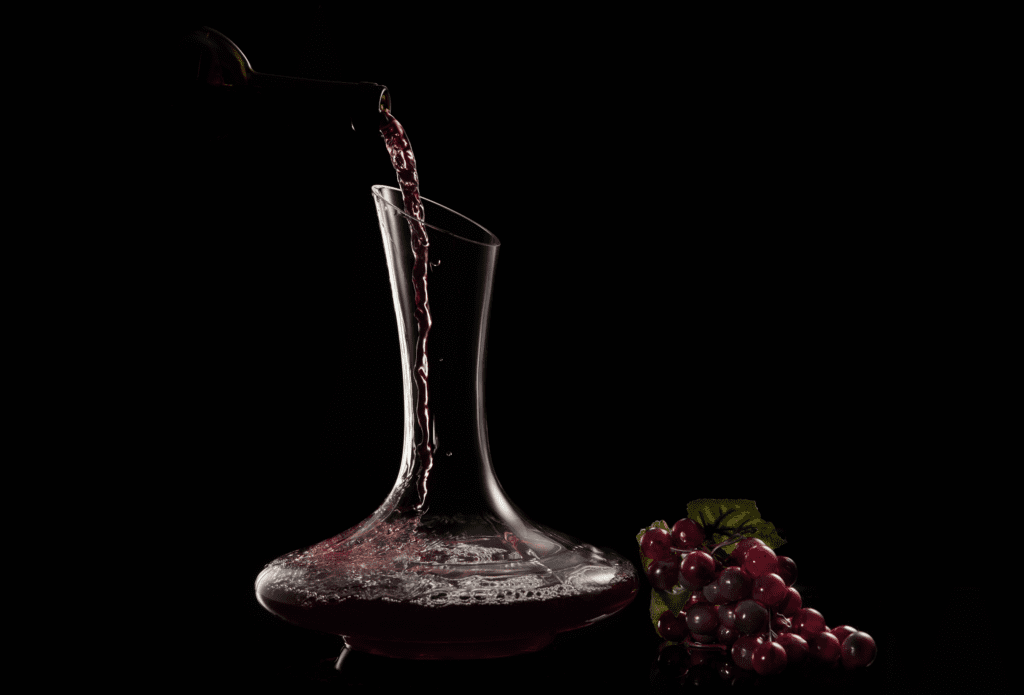
With a capacity of a full 750 ml wine bottle, it also doubles as a chic decoration on kitchen counters, bookshelves, bars, libraries or serving areas, and is sure to be a conversation starter.
“Beautiful design. Made a very good statement at our dinner table!
Also looks great sitting at the counter as decoration.”
MJ, amazon buyer
Moreover, what sets Le Portteus apart is its convenient cleaning beads that come with a cork and stopper ball for efficiency, making it easy to clean without worrying about scratches or grime.
Plus, high-grade steel pellets are an easy cleaning solution that can be used repeatedly, giving peace of mind to the dad who loves wine but doesn’t like the hassle of cleaning his decanter.
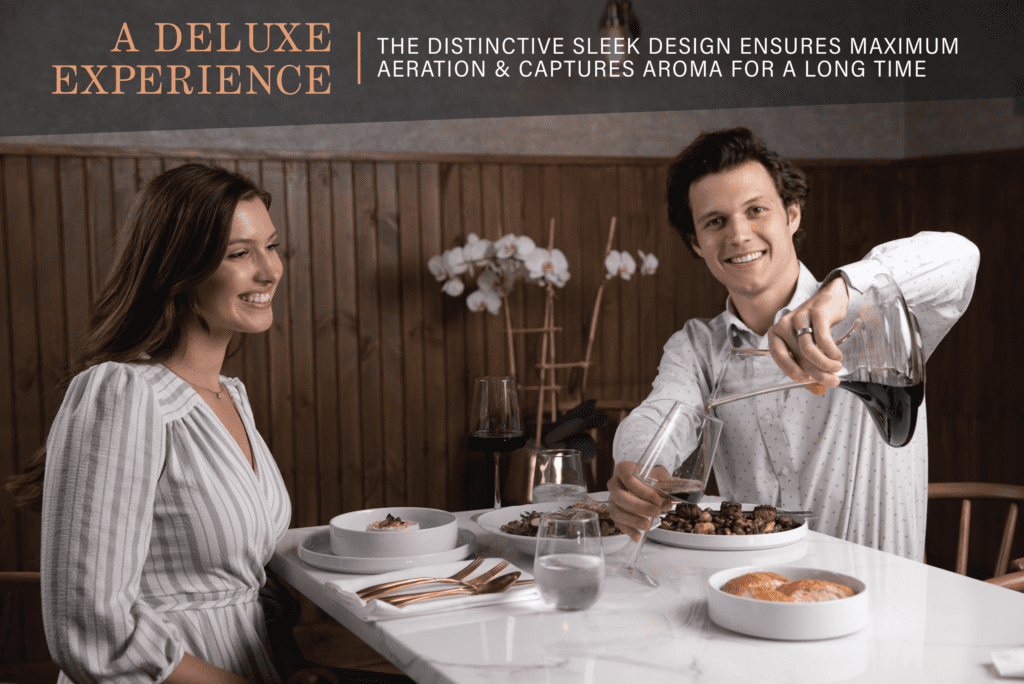
“Le Portteus Red Wine Decanter is the perfect gift for the wine-loving dad who will appreciate the enhanced wine-drinking experience and its chic design.”
Browse the Le Portteus Red Wine Decanter here and find out more for this perfect Father’s Day gift.
A Must for Wine Lovers
This wine decanter is an essential edition to your wine accessories.
Decanting wines will increase the oxygen exposure thereby releasing its natural aromas and deep flavors. As a result, improving the taste by softening the astringent tannins and letting the fruit and floral aromas come out.
Superior Quality
The lead-free crystal wine decanter is handcrafted with highly durable crystal, and guaranteed to withstand the test of time!
With the capacity of a full 750 ml wine bottle. In addition to our high quality crystal vase, our decanter set also includes a fine cork ball stopper.
Spill and Stain Proof
The slanted spout and wide bottom of this wine aerator decanter makes it an effortless and elegant pour, eliminating the frustration of wine drips and stains. Making this the perfect wine gift set for aerating red wines, releasing satisfying flavors and aromas, and indulging your taste buds with peace of mind!
Clean Easily
These cleaning beads are uniquely designed to be gentle on delicate decanters for alcohol and tough on dirt and grime, removing any buildup without leaving a scratch. These high-grade steel pellets are an easy cleaning solution that you can reuse repeatedly.
Gifts with Class
Every Le Portteus crystal vase wine aerator goes through a quality assurance product inspection and comes with a lifetime warranty.
Le Portteus Decanters and Carafes make great gifts for friends or wine lovers, and you can be sure they will love them!
An excellent idea for birthdays, housewarmings, anniversaries, wedding registries, and more!
Post Views: 7,023 -
Executive Chef Michael Hung and his celebrity chef friends Annc The Colony Palms Hotel Club Guest Chef Series
The Colony Palms Hotel is thrilled to announce the highly anticipated “Join The Club Guest Chef Series” at The Colony Club, featuring renowned Executive Chef Michael Hung and his esteemed celebrity chef friends.
Taking place throughout the month of June 2023, this exclusive culinary event promises an extraordinary dining experience for guests seeking exquisite flavors and a touch of glamour!

Colony Club’s The Club Guest Chef Series
The Colony Club, The Colony Palms Hotel’s signature restaurant, is renowned for its innovative California Fare served throughout the day, including breakfast, lunch, and dinner. Nestled in the heart of Palm Springs, guests have the option to dine in the main dining room, where they can indulge in Steve Hermann’s modern take on Art Deco glamour or choose the al fresco poolside dining patio with breathtaking views of the mountains.
The “Join The Club Guest Chef Series,” hosted by Executive Chef Michael Hung, will bring together a curated collection of celebrity chefs for four special evenings of culinary excellence. Each event will feature a delectable Five-Course Prix-Fixe Menu, Optional Wine Pairing, and selection of Specialty Handcrafted Cocktails created by The Colony Club, SO.PA, and Hermann’s Bungalows Bar Manager, Kelly David.
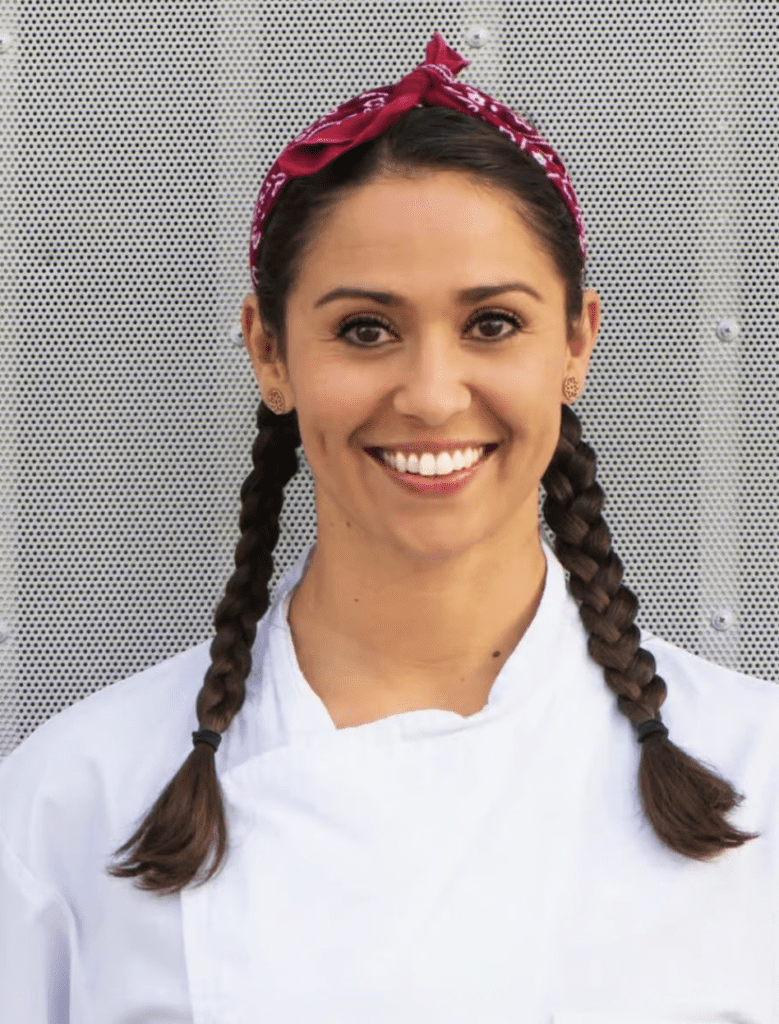
Chef Brittany Cassidy
The series kicks-off on Wednesday, June 7th, 2023, with Chef Brittany Cassidy, Head Chef at Violet Bistro in Westwood. Born and raised in San Diego, Cassidy’s culinary journey spans from Le Cordon Bleu in Hollywood to some of LA’s top kitchens, including Rustic Canyon and Birdie G’s. She will showcase her affinity for crave-worthy comfort food and transportive French Bistro fare in a menu that includes dishes such as her Roasted Beet Salad, and Confit Duck Leg, along with Hung’s Local Halibut Carpaccio and Sauteed Petrale Sole, finished with Cassidy’s Vegan Chocolate Mousse ($89 per person, does not include tax and gratuity).

Chef Isaias Peña
On Wednesday, June 14th, 2023, Chef Isaias Peña, Caruso Regional Executive Chef of Hank’s and Qué Padre in the Pacific Palisades at Palisades Village, will take the stage. With a deep appreciation for Mexican cuisine and fusion, Chef Peña’s culinary creations at Hank’s and Qué Padre captivate diners with their extraordinary flavors and striking presentation.
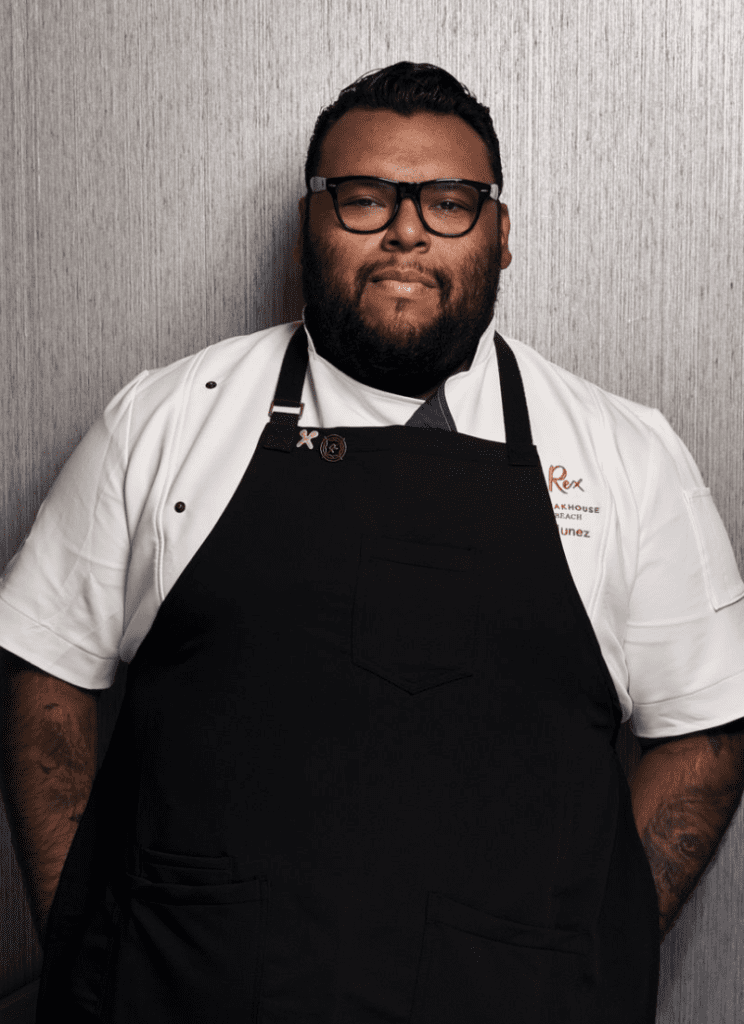
Chef Walter Nunez
The Guest Chef Series continues Wednesday, June 21st, 2023, with Chef Walter Nunez, Executive Chef of The Rex – Seaside Steakhouse in Redondo Beach. Chef Nunez’s refined approach to cuisine has elevated The Rex’s dining experience, showcasing his expertise in traditional and contemporary culinary techniques.
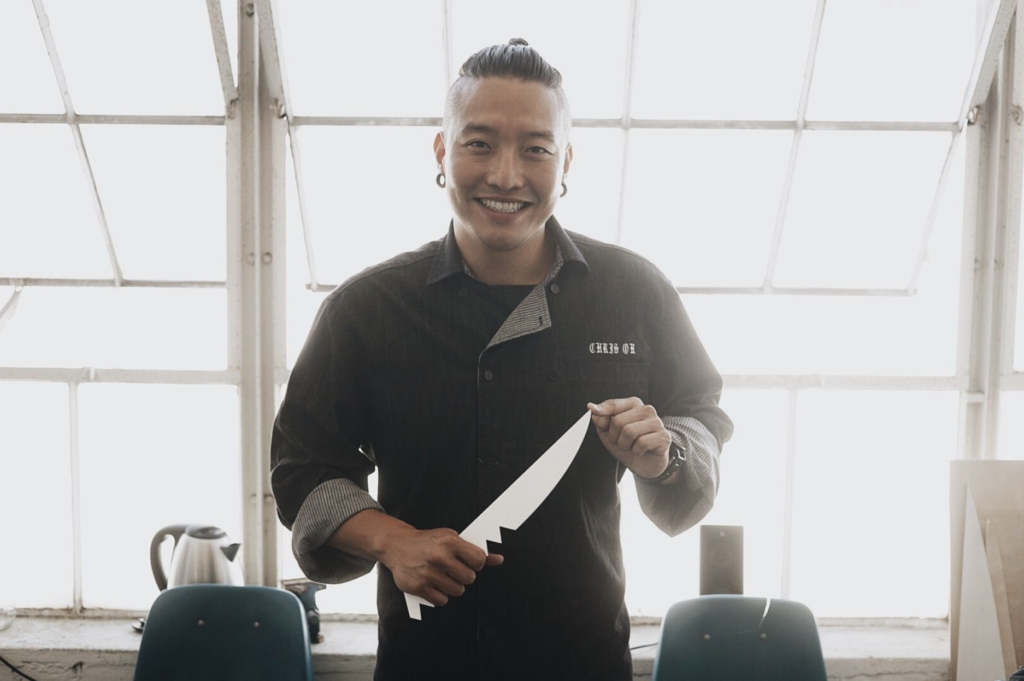
Chef Chris Oh
The final event of the series will be held on Wednesday, June 28th, 2023, featuring the multi-talented Chef Chris Oh (Seoul Sausage, Escala K-Town,Um.Ma SF, Kamu Ultra Karaoke) and Executive Chef Michael Hung presenting an evening of Traditional Korean Barbeque spotlighting Prime Beef and Japanese A5 Wagyu Beef served on The Colony Club’s poolside dining patio. Chef Chris Oh is known as the founder of Seoul Sausage Co and a winner of multiple TV competition shows, Chef Oh’s innovative culinary creations bridge cultural traditions and redefine the boundaries of gastronomy.
For more information on The Colony Club’s “Join The Club Guest Chef Series” coming up on Wednesday, June 7th, 2023, Wednesday, June 14th, 2023, Wednesday, June 21st, 2023, and Wednesday, June 28th, 2023, please call 760.969.1800 or to make your reservations now, please visitOpenTable.com.
The Colony Club at The Colony Palms Hotel is open for Dinner every Sunday through Thursday from 5:00 pm to 8:00 pm, and every Friday and Saturday from 5:00 pm to 10:00 pm. Lunch is server every Monday through Friday from 11:00 am to 3:00 pm. Breakfast is offered every Monday through Friday from 8:00 am to 11:00 am, and Brunch is served every Saturday and Sunday from 8:00 am to 3:00 pm. For more information about The Colony Club restaurant at The Colony Palms Hotel or to make reservations, please call 760.969.1800 or visit www.ColonyPalmsHotels.com.
ABOUT THE COLONY CLUB AT THE COLONY PALMS HOTEL
The Colony Club is The Colony Palm Hotel’s signature restaurant where Executive Chef Michael Hung showcases his innovative California Fare for Breakfast, Lunch, and Dinner. Guests of The Colony Club can dine inside the main dining room while enjoying Hermann’s modern take on Art Deco glamour or enjoy the warm breezes while dining al fresco poolside with a stunning view of the mountains.
ABOUT EXECUTIVE CHEF MICHAEL HUNG:
Chef Michael Hung, a culinary virtuoso, brings his innovative vision and wealth of experience to The Colony Club at The Colony Palms Hotel and SO.PA at L’Horizon Resort and Hermann Bungalows as their newly appointed Executive Chef.
With an impressive career spanning from apprenticeships at Daniel and Aquavit in New York City to working alongside renowned chefs in San Francisco, including Chef Traci Des Jardins at Jardiniere and Chef Roland Passot at La Folie, Chef Hung has solidified his reputation as a rising star.
Notable achievements include his acclaimed restaurant Faith & Flower in Los Angeles, which garnered numerous accolades, and the highly praised Viviane at the Avalon Hotel, recognized by food critics and publications alike.
Now in Palm Springs, Chef Michael Hung is poised to elevate dining experiences, fusing vibrant flavors, local ingredients, and his own creative flair to create unforgettable culinary journeys at these esteemed establishments.
ABOUT THE COLONY PALMS HOTEL
Opened in the 1930s, The Colony Palms has a colorful history involving mobsters, athletes, politicians, and Hollywood stars. This Spanish colonial gem, updated by celebrated designer Steve Hermann, blends Hollywood glamour with an art-
deco aesthetic. Located in the heart of Palm Springs, it provides a lush escape just steps from the city’s design district, complete with boutiques, restaurants, and nightlife. With fire pits and intimate alcoves dotted throughout the property, the exclusive and elevated setting features 57 exquisitely designed rooms and suites, unrivaled poolside dining, and a wellness spa with all the latest offerings.
This upscale adults-only boutique hotel and its inviting palm tree-lined pool are set against the backdrop of the San Jacinto Mountains. The perfect place to savor the ultimate Palm Springs experience, The Colony Palms is a laid-back yet upbeat retreat that brings a dash of Hollywood glamour to the desert.
ABOUT STEVE HERMANN:
Steve Hermann is a celebrated designer of high-end homes and hotels. As one of the most prolific designers within California, he is known as the design guru for the Hollywood elite, captains of industry, and foreign royalty.
His innovative and imaginative homes are owned by A-list celebrities, entertainment executives and members of the Forbes top ten wealthiest list. His designs have been featured on Architectural Digest, Conde Nast Traveler, Travel and Leisure, E!, MTV, ABC, as well as in hundreds of magazines and websites worldwide.
One of his projects, called The Glass Pavilion, was published in over a hundred magazines and newspapers and was the third most Googled house in the world. Steve has established a world recognized luxury hospitality company, Steve Hermann Luxury Hotels, of which L’Horizon Palm Springs served as the initial flagship property. L’Horizon has won dozens of awards including the #1 Resort in the world by the readers of Conde Naste Traveler.
Steve has followed up his success by adding The Colony Palms Hotel to his portfolio, which he has transformed into another spectacular luxury resort. When Steve is not designing residences and opening hotels, he spends his time collecting post war, European sports cars, which he enjoys driving with his wife and two young daughters. After 15 years of living in Los Angeles, Steve currently calls Montecito, California home.
Social Media:
Follow @colonyclubps on Instagram and @colonypalmshotel on Facebook
Follow Executive Chef Michael Hung @chefmikeh on Instagram
The Colony Club at The Colony Palms Hotel
572 N. Indian Canyon Drive
Palm Springs, CA 92262
T: 760.969.1800
Post Views: 5,835 -
WeHo’s Newest culinary experience: Blue Birdy Gastropub Opens on Sunset Strip Near legendary Whiskey A-Go-Go
Sunset Strip’s Blue Birdy Gastropub Opens Near legendary Whiskey A-Go-Go
Located two doors down from the legendary Whiskey A-Go-Go is a brand-new culinary experience.
Blue Birdy offers up some super tasty gastropub fare on the iconic Sunset Strip.
Blue Birdy opened its doors to amazing success in early 2024, due largely to its chef and owner JC Mahdavi.
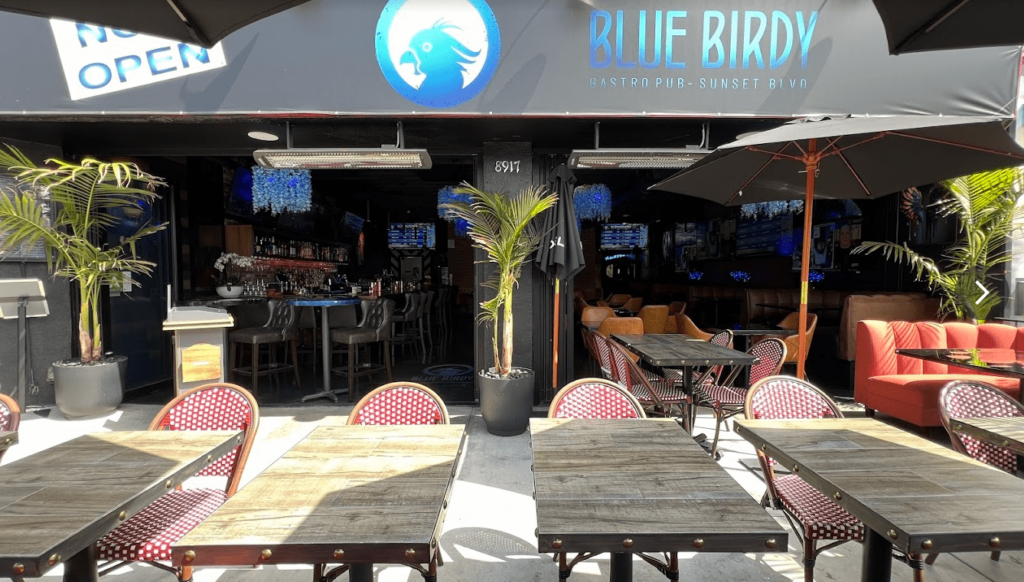
JC is no stranger to success since he’s been in the restaurant business, having owned Joxer Daly’s in Culver City for many years. His formula is great food mixed with solid cocktail recipes. Joxer Daly’s is an Irish Pub/Sports Bar with a neighborhood feel, a true staple in the culinary landscape of Los Angeles.
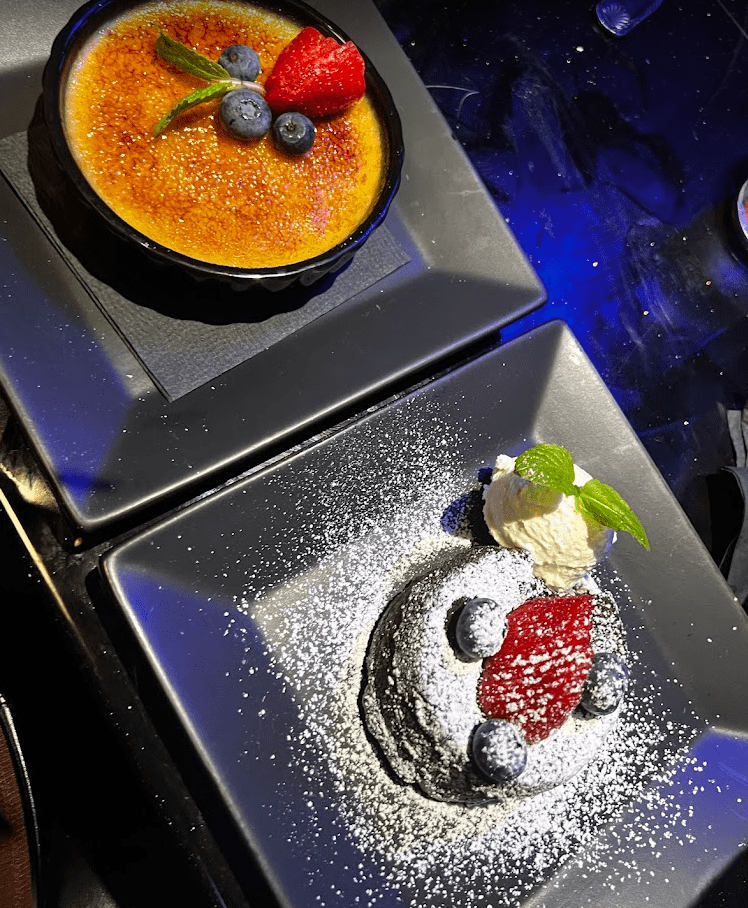
He brings that same philosophy to Blue Birdy but with more of an upscale vibe.
Blue Birdy has a French-influenced menu. JC implements his family’s recipes, hailing from France, he knows what good mouthwatering food is and how to create it.
“I want my customers to feel comfortable at Blue Birdy,
a place that they can come to and leave the stress of their day behind,
enjoy great libations and wonderfully inspired gastropub cuisine.”
owner JC Mahdavi
Blue Birdy’s menu includes a wonderful specialty cocktail program, all made from scratch.
The Boom Ba Da packs a nice punch, with its smooth lemon flavor and gorgeous presentation.
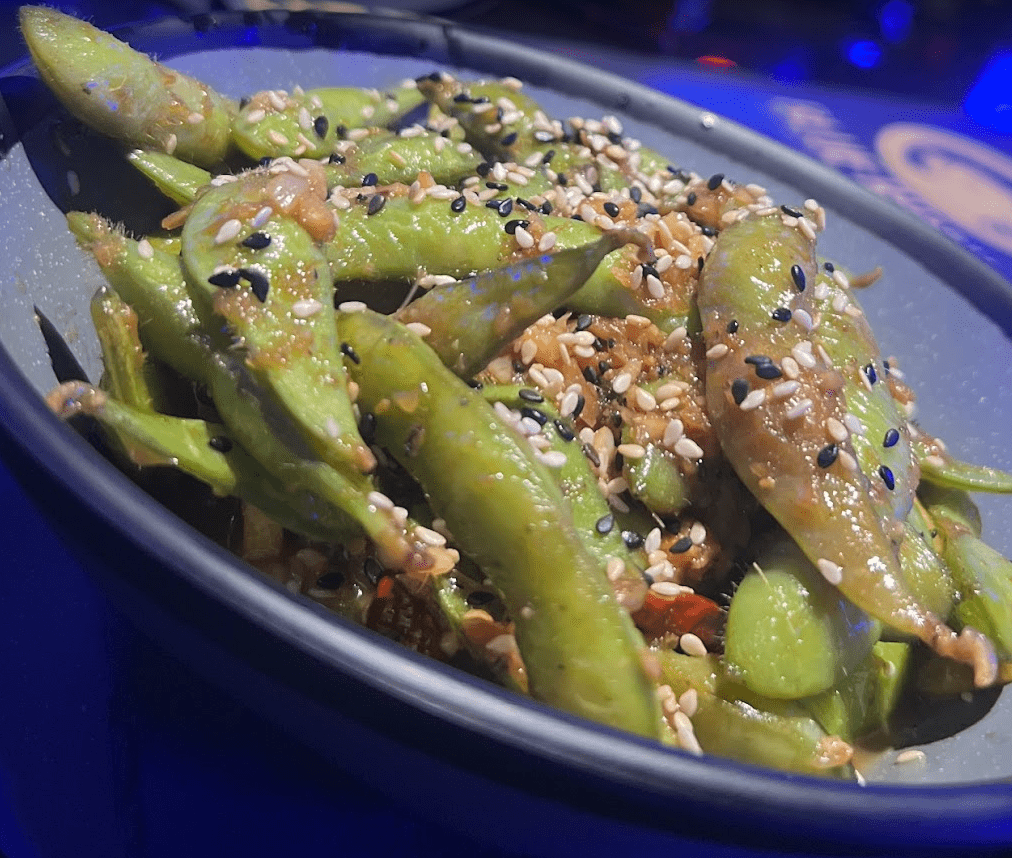
Strawberry Fields is a nice refreshing blend of champagne vodka and strawberry puree, almost like a smoothy but with a nice marriage of citrus essences, which has a great mouth feel. Brunch items are huge and super tasty.
Their French Toast is unlike any other, with ube, cream cheese, and sugar-filled, it’s purple and really is amazing. The Short Rib Benedict is comfort brunch at its best, a must-try.
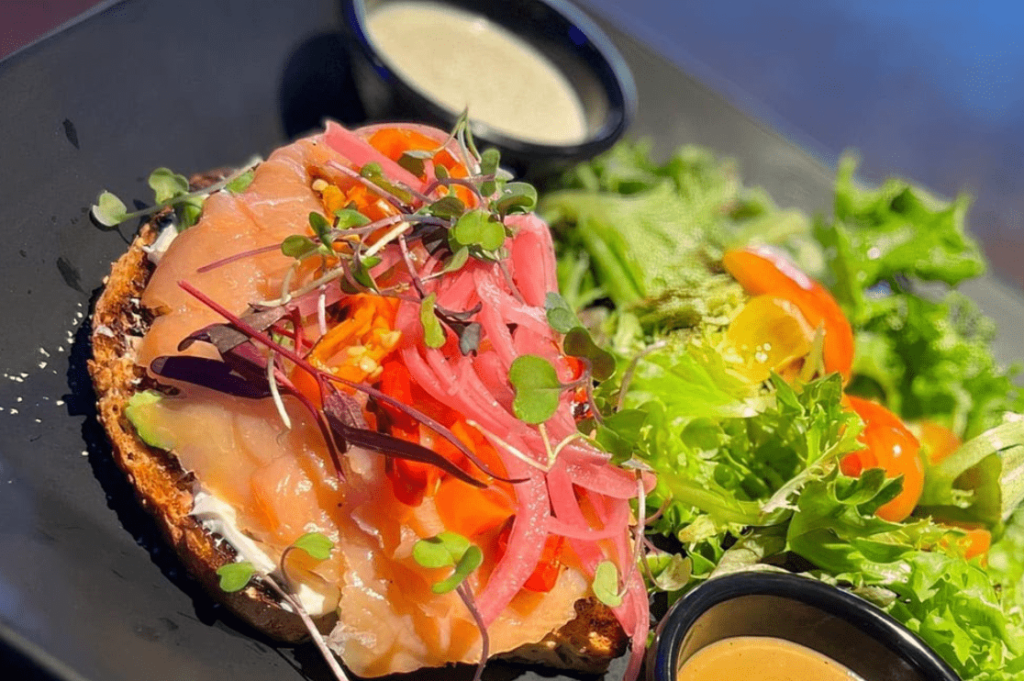
Their Noodle Salad is perfect for the health-conscious diner as well as their tempura asparagus. Entree menu items include Lemon Herb Chicken, Steak and Fries, Fish & Chips, Teriyaki Salmon, and lots of Burgers – all simply delectable.
Whatever you order, you too will be surprised at how great their food is.
The sparkling interior gives you an elegant hipster vibe. The subtle blue flowers that adorn the overhead light fixtures really create a cool, sensual feeling.
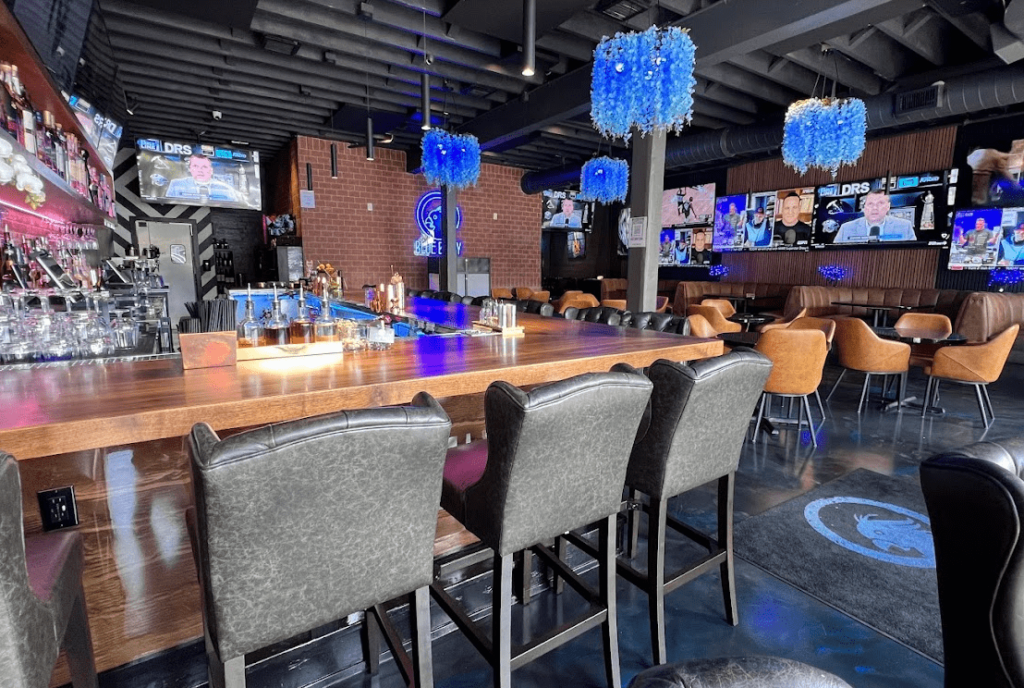
Striations of blue linear lines are part of the overall flooring. Highlighted on one wall is a floor-to-ceiling LED flat-screen TV wall, that is guaranteed to bring in many sports fans for those big-ticket games, with many additional screens both inside and out.
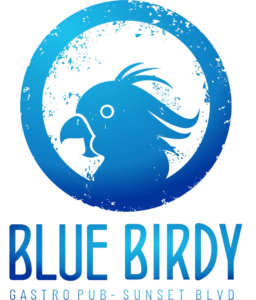
Blue Birdy can accommodate inside seating as well as a front street-level patio and a back patio for more of a secluded experience, it’s the perfect spot for a private party.
There are plans for different themed nights. So far, Tropical Thursdays are guaranteed to get your Salsa on. Friday will be dress-up Drag Night, and Saturday is Shabhaye Tehran-LA. With all of the viewing opportunities, any night or day is a sports theme, but whatever the occasion, Blue Birdy will make your Sunset Strip experience one to remember.
Post Views: 538
